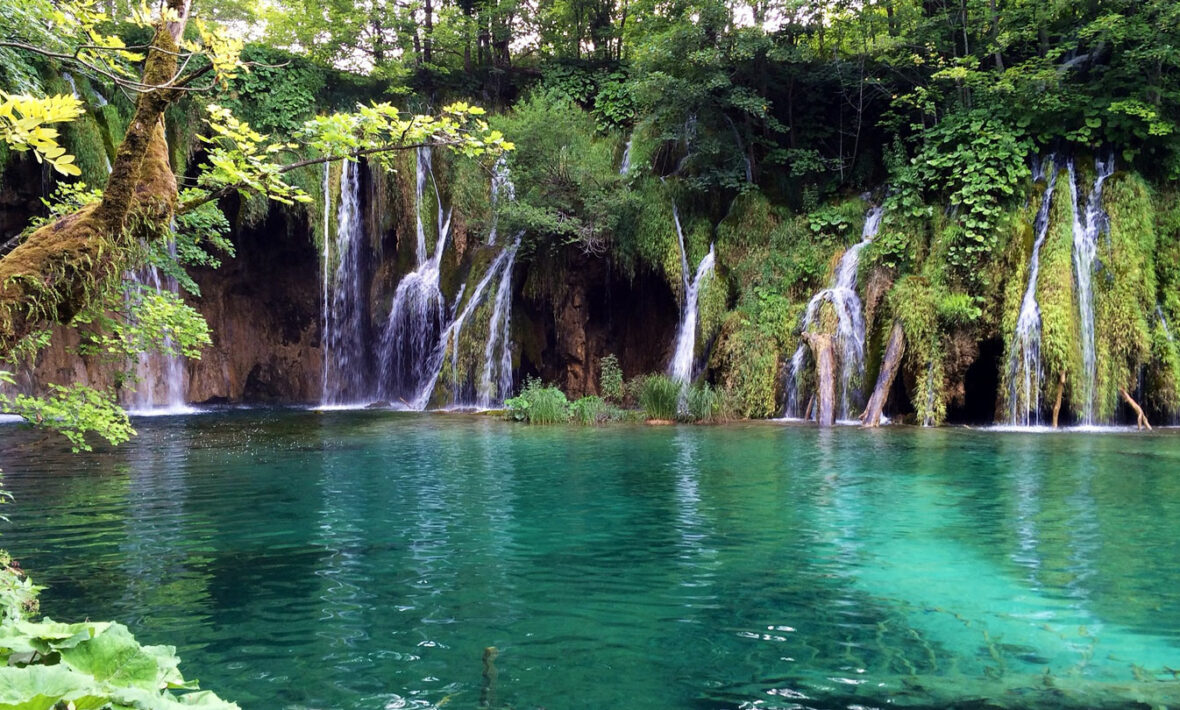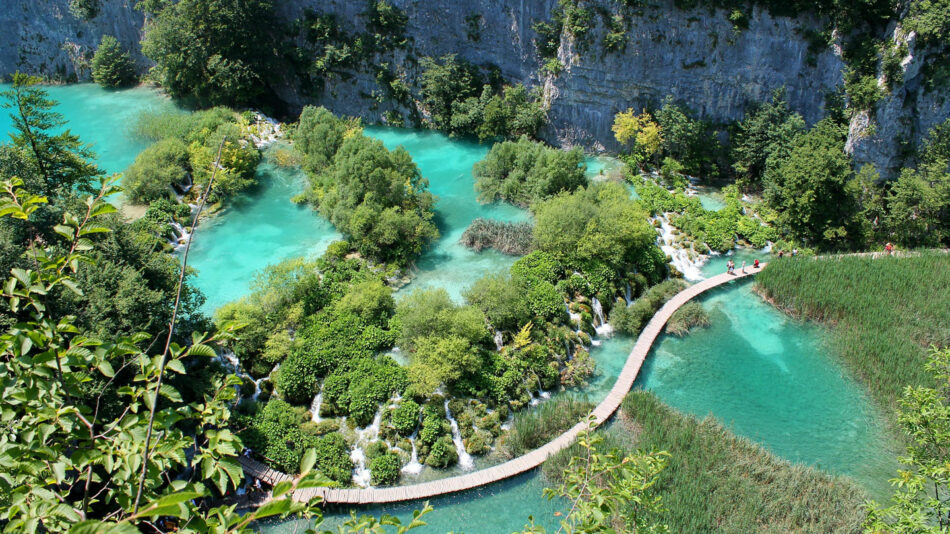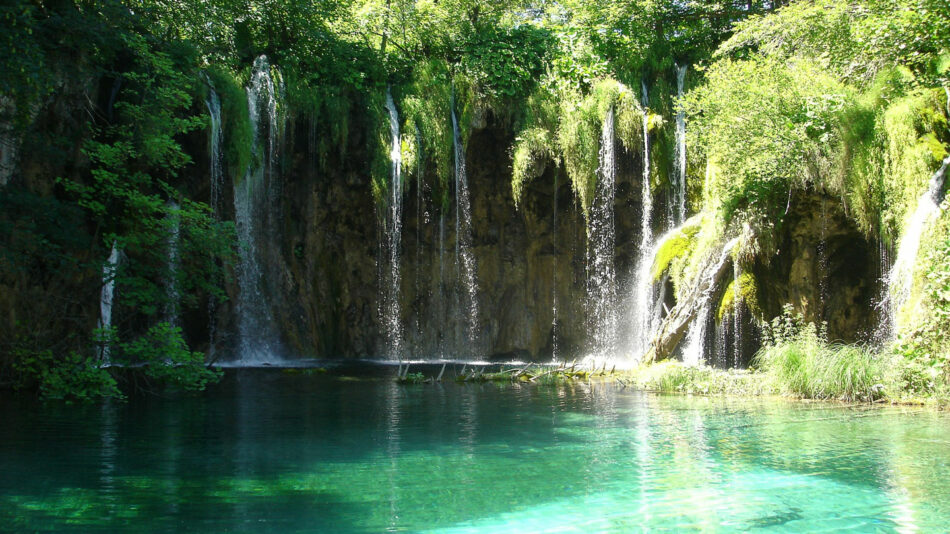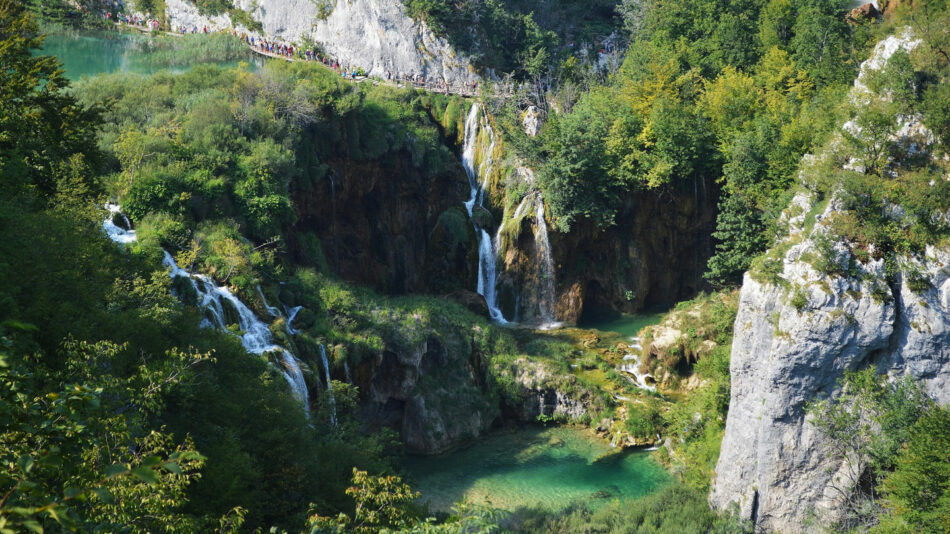
Croatia’s Plitvice Lakes look like something out of a fairy tale. The vibrant blue pools and trickling waterfalls have captured many travellers hearts, but have you ever wondered how they were created? Wonder no more! Let’s get into some science…
Plitvice Lakes is a series of 16 lakes and little rivers and waterfalls that run over a few levels in one of Croatia’s oldest and largest national parks. The first recording of them dates back to 1777 (although they’re obviously far older than that, with some reports saying they’ve been there since the end of the Ice Age) when a priest described the area as ‘plitvice’, after the Croatian word pličina, plitvak or plitko, meaning shallow. The pools have been shaped over the centuries to be just that; a bunch of beautiful shallow lakes. The natural phenomena that created them involves a lot of slow shifting and dissolving of rock, resulting in what is known at this site as ‘karst topography’.

Plitvice has a lot of limestone, specifically travertine, which is a softer stone made up of calcium carbonate rich waters that gather and harden over time. It tends to follow the pattern of moss and water flow, which is how the chain-like barriers have been formed at this natural wonder. The water flowing underneath then reclaims the limestone, breaking down the rock.
So why is it still here for us to enjoy? Well the process is still happening today! As the water breaks the rock underneath, the natural hardening process is still happening on top, replacing the broken structures. We can’t see this with the naked eye of course and it does take thousands of years, but it’s estimated the travertine rock ‘grows’ back at a rate of 1cm per year.
It’s pretty amazing to think that the lake you see this year won’t be the same one you see next, right? The fact it’s ever changing is one of Plitvice Lake’s most distinctive features. Some waterfalls go dry, while new ones are formed in other spots because the stone has filled up a hole or washed away to make a new one. It makes in depth analysis of the lakes difficult as the waterways and rock shift in the complex and sensitive environment, but that’s just part of its beauty in our opinion.
RELATED: THINGS TO DO IN CROATIA IF YOU’RE OCEAN OBSESSED

Another element of its beauty people love is the vibrant blue of the water. Again, we have the moss that gets fossilised into rock for this! The type of algae that blooms in the waters of Plitvice releases gases as it grows and decomposes, and when those gases react with the water it shows as a stunning shade of azure. The exact blue is always changing though, as the mineral and gases react to the sunlight, which is why in some photos the water seems dark or really bright.
Everything in this ecosystem works in harmony, which is why there’s no swimming allowed! Splashing around in there and letting sunscreens or pollution get in could really damage the natural flora and (microscopic) fauna. In fact, this was found out the hard way back in the early Noughties when nearby hotels pumped their waste water in and the entire ecosystem changed. Swimming and all water sports were then banned since 2006.

Plitvice Lakes is an amazing spot and a must-see for anyone heading to Croatia! If you’ve been, tag us in your travels on Instagram using #contiki or slide into our DM’s on Facebook.

